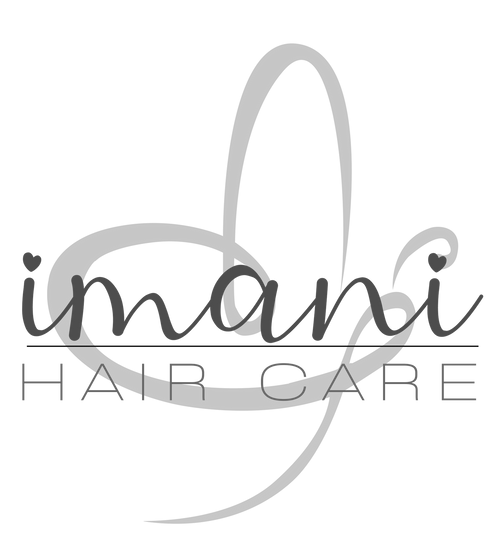Since the arrival of the first African slaves in Virginia during the year of 1619, the Black hair care regimen has endured years of scrutiny, only to blossom into a billion-dollar industry. From groundbreaking pioneers to hair aficionados, each contribution has helped with shaping the complex vision of Black hair we see today. Over the years, Black hair care routines and styles have changed with the times. Now, we can celebrate the greatness that we embrace today. As an African American woman myself, I can attest to the fact that the evolution of Black hair in America is simply beautiful.
1700s-1800s

As slaves begin pouring into America in the 1700s, the texture of their hair was often referenced as “wool-like.” To fit in with European culture, Blacks began to devise methods to straighten hair. Pressing combs, now known as “hot combs,” originated around 1845 by way of the French. Around 1880, pressing combs made their way to America and became a Black household staple. The combs were heated by way of gas heater and stove and assisted with straightening hair temporarily.
Early 1900s

In the 1900s, Madame CJ Walker patents her own line of Black hair-care products. She becomes known for her impact on the press-and-curl styling process, and later becomes the first American female self-made millionaire.

Also, during the 1900s, around 1909 to be exact, Garrett Augustus Morgan discovers how to create hair relaxer for Black hair. He founded his own company, the G.A. Morgan Hair Refining Company, which specialized in creating the first chemical relaxers to hit the market. In 1954, George E. Johnson creates a permanent hair straightener for Black men – the Ultra Wave Hair Culture. Later, the product releases a female version, and Black women and men alike all over the US are seen with straight, European styles.
Late 1960s

During the late 1960s, the artists of Motown Records became not only a cultural, but an American phenomenon. Diana Ross, at the forefront of Black entertainment, became an idol for Black hair. Many women replicated Ross’ signature styles using wigs and relaxers. Another noteworthy Black entertainer, Diahann Caroll, becomes the first African American woman to star in her own television show. Black women also began donning hairstyles like her beautiful, relaxed tresses.
Early 1970s

With the Black Power movement in full effect, a rebirth of appreciation for the African American culture began. Actresses such as Pam Grier followed the likes of political leader Angela Davis, sporting a high, sassy Afro.
Late 1970s

In the late 1970s, the famous Jheri Curl is invented. Stars like the noteworthy Lionel Richie and beautiful powerhouse Donna Summer began sporting the new do, and soon, a trend was born. Around this time, we see an increase in sales for various Black hair products. Items, including activators, perms, and moisturizers to name a few, began bringing in massive revenue.
Early 1980s

Curly perms, braids, and Jheri curls were all popular Black hair trends in the early 1980s. Black women began adding extensions to their braids, making a statement with their daring length. Singers like the iconic Janet Jackson and the beautiful legend Whitney Houston wore high curly perms, full of sass and volume. Finger waves made a re-appearance from the 1950s as well.
Late 1980s

Along with the creative hair trends in the early 1980s, funky, daring asymmetrical styles became the wave in the late 1980s. Uniquely, one side of the style would flow longer than the other, leaving hair stylists room to create hair masterpieces. The style became a way to stand out, and Blacks from all walks of life, from CEOs to celebrities, began wearing the look.
Early 1990s

During the early 1990s, we see stars like the beautiful Halle Berry sporting, short, clean straightened stresses. Oprah also commanded daytime television almost regally with her high, sophisticated curls. Trends from the 1980s, such as the long, extended braid look, thrived in the early 1990s as well.
Late 1990s

In the late 1990s, we see a resurgence in the trend of straightening Black hair. The talented beauty Aaliyah makes her way to stardom, and many Black women could be seen emulating her style. Also, Black pride, continues strong through Black hair trends. We notice singers like Erykah Badu and Lauren Hill sporting iconic natural hairstyles as they spread wisdom and love through the Black community.
2000s – TODAY

Noteworthy fashion icon and songstress Beyonce’ rises to fame with debut of the girl group, Destiny’s Child. The group is spotted on many a carpet sporting a variety of different Black hairstyles, all made with different colors and extensions. This trend carries over into the notable hair styles we see today.
We Celebrate Healthy Black Hair at Imani Hair Care
Whether daring, straightened and extended, or sassy, sophisticated and natural, we here at Imani Hair Care love and embrace all Black hair types. Try one of our products today to promote strong, healthy Black hair.

Written by Shelby Smith
Shelby Smith is a freelance content writer, blogger and clarinetist with a passion for the arts. Bethune-Cookman University alumna, Tau Beta Sigma member and ex-Marching Wildcat, she is constantly looking for innovative ways to serve the writing community, on and offline. Shelby, currently residing in Florida, loves to spend her spare time traveling, reading and cooking.
